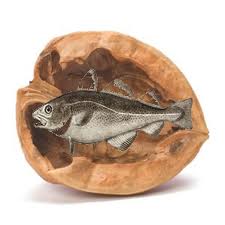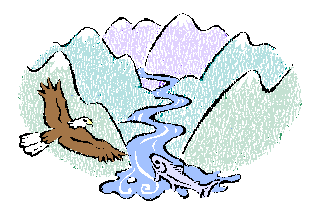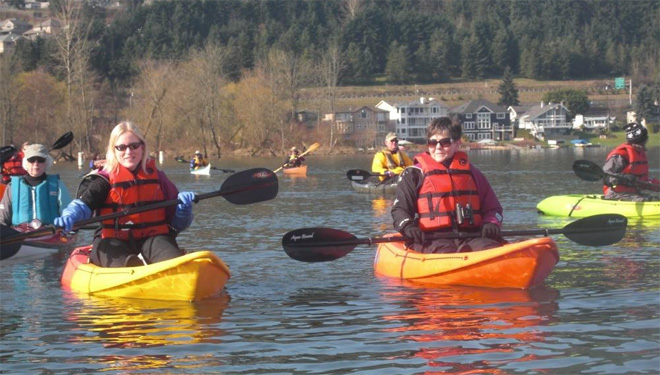In this new shorter-format early May Occasional you’ll read about the evils of amateur car washing, the use of contaminated water to gain political advantage, and the perils of falling into cold water even on a warm day. Hear about John Guest and Jaco fittings, Pure Water Products’ fleet, home car washing kits, and water at Camp Lejeune. And, as always, there is much, much more.
The Pure Water Occasional is a weekly email newsletter produced and issued by Pure Water Products of Denton, Texas. We also publish thePure Water Gazette, which posts new articles about water and water treatment daily and provides “vast piles of information in the Gazette’s tangy, irreverent style” (Wilmington Sun).
If you would like to read this issue on the Pure Water Gazette’s website, go here.
While you were putting away your winter clothes and tuning up your lawn mower, a lot of important things happened in the interesting world of water. Read on for details.
In the Case of Automobiles, Cleanliness Is Not Next to Greenliness
A woman I know always tells critics of her dirty truck that she values the vehicle so highly that she only allows God to wash it. I’ve used her line a few times myself and I can say with accuracy that a month of Sundays, at least, is my regular truck washing interval. Imagine my satisfaction, then, when I came across the article below in the current Stormwater. While the author, Editor Janice Kaspersen, stops short of actually endorsing abstention from vehicle scrubbing, she does make it clear that when you give the kids from the church $20 for bathing your Chevy in the parking lot, you really don’t deserve a pat on the back. –Gene Franks.
Down the Drain
by Janice Kaspersen, Editor
Stormwater professionals have long acknowledged the water-quality problems associated with car washing, not only with centralized car washing services that direct water to the storm drains, but also with individuals who wash their own cars in their driveways or in the street. In both cases—unless the car wash either recycles the water or directs it to the sanitary sewer, and unless the person washing a car in the driveway has some means to capture the water—the detergent and whatever else comes off the car goes straight to the storm drain.
But nothing, perhaps, makes stormwater managers cringe as much as local fundraising car washes, which seem to take place on just about every sunny weekend—high school sports teams, band members, scout troops, or local charities raising money by washing dozens of vehicles on a convenient vacant lot.
Studies have been done to quantify how much harm the practice might actually cause to surface waters, as in this study in the Puget Sound area. Some stormwater programs have encouraged fundraising groups to hold their events at a professional car wash instead, where the water is properly handled. In addition to keeping it out of the storm drain,studies have estimated that a commercial car washes uses 60% less water than washing with a hose, in part because the pressure nozzles mix air with the water to create high pressure with less water volume.
Alternatively, many organizations and local governments provide home car-washing kits to local residents, including catch basin inserts to trap and divert the soapy water. The use of such kits has been especially encouraged for community fundraising car wash events. Prohibiting the fundraisers outright proved to be extremely unpopular, however.The water-quality message finally seems to be getting through, though, at least in some places. Officials in Washington state say the traditional vacant-lot car wash is dying out. Three-quarters of people surveyed now say the practice should be discontinued. Fundraising groups are looking to alternatives, such as partnering with a professional car wash to offer car-washing coupons. And there’s even some evidence that people who do pay for their car to be washed by a local group are more likely to ask where the runoff goes—evidence that the public education message is actually getting through.
Source: Stormwater.
The Purity of Tap Water Cannot Be Taken for Granted: Reason #283 why you should have a good drinking water filter in your home.
In late April of 2013 a former suburban Chicago water official was convicted of lying about secretly mixing carcinogen-tainted well water into an Illinois town’s drinking water supply.
According to an article in the Insurance Journal, the 55-year-old long-time water department supervisor admitted to mixing tainted well water in with the more expensive Lake Michigan water in an effort to gain political advantage by keeping the town’s water bills low. The tainted water was added to the town’s water supply from 1982 until the deception was uncovered in 2008. Town citizens, therefore, drank dangerously polluted water for a quarter of a century without knowing it. The cancer rate in the town was higher than normal and law suits blaming the water for a variety of illness, including brain cancer, are now in progress.
It is unlikely that an evil water commissioner in your town is plotting to buy votes by selling you cheap, polluted water, but it
![usmctaintedwater_3[1]](https://ymlp.com/https.php?id=purewatergazette.net/blog/wp-content/uploads/2012/09/usmctaintedwater_31.jpg)
Camp Lejeune served its soldiers and their families highly contaminated water over a period of 24 years.
is true that public water systems are not perfect. Not even on military bases, as previous Gazette articles have shown. Water systems can put out low quality water because of untrained or uncaring staff, because of the incursion of tainted water from natural causes, because of equipment failures, because of aging infrastructure . . . because of reasons, including cost-cutting politicians, too numerous to recount. Public water supplies are wonderful, and we support them strongly. But accidents happen.And even under the best of conditions, no matter how well your city’s water supply system prepares your drinking water, the water has to travel through miles of often unsafe piping to reach you.It certainly makes sense to assure yourself safe water with a point-of-use drinking water system. It your water is good, a good drinking water unit will make it better. If it is unsafe, a good treatment system will provide protection.
Read the entire story of the Illinois pollution incident in the Insurance Journal.
Quick-Connect and Simple Compression Fittings for Water Filtration Equipment
In a Nutshell; Water treatment devices like undersink filters and reverse osmosis units need fittings to connect tubes to tubes and tubes to fixed objects like filter vessels. The predominant styles are quick-connect fittings and plastic compression fittings. This article is an introduction to the two styles.
The most commonly used fittings on reverse osmosis units and undersink water filters are the nylon compression fittings called Jaco and the more recently developed push-in quick connects called John Guest. There are many manufacturers of both styles, but the imitators are most often referred to by the name of the originator — the way that all soft drinks are sometimes called “cokes.” The fittings shown here (and featured in our products) are from the original manufacturers — John Guest and Jaco — and we also use the superb double-o-ring Mur-lok Fittings from the G. A. Murdock Company.
The two fittings styles can be interchanged without a problem. If your undersink unit uses Jaco fittings and you want to replace one or more fittings with a John Guest style, it’s an easy conversion. There is, however, one essential rule you must follow: Jaco fittings must always be used with a tube insert, and tube inserts are never used with John Guest or Mur-lok quick connects.
To connect Jaco Fittings, back the nut onto the tube, insert the tube insert as far as it will go into the tube, then push the tube into the threaded body of the fitting and tighten the nut. Tighten it as tight as you can get it with your hand, then take one more complete turn with a wrench. No more than one. Over tightening will eventually result in a leak.
With John Guest style, be sure that the tube is cut squarely, then push it into the fitting until you feel it hit bottom. It’s done. If you need to remove the tube, be sure that all pressure is off the fitting, push in on the collet with your thumbnail, and pull the tube out. Remember that you don’t use a tube support with quick connect fittings.
Tubing used for filters and reverse osmosis units is always measured by its outside diameter. Undersink reverse osmosis units use 1/4″ OD tubing, and some units use a mixture of 1/4″ and 3/8″ tubing.
Fittings of both types are available for larger tube sizes, but this article applies only to tube sizes up to 3/8″ OD.
![jg_murlock[1]](https://ymlp.com/https.php?id=purewatergazette.net/blog/wp-content/uploads/2013/05/jg_murlock1.jpg)
- Above is a clear plastic model of a Mur-lok quick connect fitting. The white insert is called the collet. Note that it has two o-rings. Most quick connects have only one.
Reference Source: Pure Water Products
More pages to visit:
Cold water can be deadly on warm weekend
by Rose Egge

In a Nutshell: Warm spring days cause people to forget that water in lakes and rivers can be very cold, and cold water has a devastating effect on the human body. The danger of drowning increases substantially in cold water.
SEATTLE, Wash. — With the state’s recent snow melt and few warm days so far this year, Wade Alonzo with Washington State Parks said the temperature of local rivers and lakes is still in the low 40s.
Most people will find these temperatures too cold for swimming, but Alonzo said he is concerned about people who unexpectedly end up in the water.
“If [boaters] capsize or they somehow fall overboard, they can be in trouble if they’re not prepared for the conditions,” Alonzo said.
Once a person is submerged in water that cold their body immediately goes into shock, said Elizabeth Bennett, a drowning prevention expert at Seattle Children’s Hospital.
The day is warm but the water is cold. Beware.
“You take an involuntary gasp of air, and if you’re submerged you’re breathing in water,” she said.
Alonzo said the body starts to pull blood away from the limbs into the core after a few minutes, making it difficult to move.
“If you’re not wearing a life jacket going in, it’s going to be difficult to get one on once you’re in the water,” Alonzo said.
Tony Gomez, chair of Seattle-King County Drowning Prevention Coalition, was a life guard at Lake Sammamish and Snoqualmie River where he rescued swimmers who fell into cold water.
“As soon as they hit the water, they were in trouble,” Gomez said. “They were decent swimmers in a pool, but put them in cold water and they could only do a few strokes before they would get tired, start to panic and go under.”
If a person is in cold water for at least a minute hypothermia can set in, leading to permanent disability or death.
This is especially concerning for children, who often have a higher metabolism and can lose body heat faster said Dr. Mark Lo from the Seattle Children’s Emergency Medical Department.
“When they come out of the water get them warm and dry as soon as possible,” Lo said. “If they start to hallucinate or feel sleepy then they need to be seen by a medical professional quickly.”
Alonzo said consuming alcohol can also threaten boaters’ safety, especially since its affects are exaggerated in the sun and on the water. When a person is intoxicated they can also feel warmer than they actually are.
“Alcohol is going to impair your judgment, so you might not be making the best decisions of where to go, when to go,” Alonzo said.
Despite the risks, Alonzo said residents shouldn’t avoid boats or beaches this weekend. Instead he says they should be prepared to end up in the water. He recommended boaters always wear a life jacket, stay in a group with others who can help them out of the water, and pack extra dry clothes.
“We want people to get out on the water, but we want to do it safely,” Alonzo said. “Get a life jacket you like that fits well and wear it.”
Bennett said parents wearing their own life jackets can set a good example for their kids and help them be ready to rescue them at any moment.
“You need to be in arm’s length of your child at all times,” Bennett said. “A number of children who drown just wander away, and all of the sudden they’re out of sight. Be right there with no distractions.”
Alonzo said it is also important to make sure your boating activity is appropriate to your skill level.
The State Department of Health advises anyone planning a river activity to always check river levels and conditions before leaving home. Runoff from mountain snow and rain can create high, fast-moving water that can carry debris and increase drowning risks.
Source: KVAL.Com
If you haven’t been reading the daily posts to the Pure Water Gazette, here are a few of the recent articles you might want to consider:
Places to Visit on Our Websites
Model 77: “The World’s Greatest $77 Water Filter”
Sprite Shower Filters: You’ll Sing Better!
Write to the Gazette: pwp@purewaterproducts.com
Please Visit
The Pure Water Gazette – now in blog format. Take a look.
![occasionalbanner300[1]](https://ymlp.com/https.php?id=purewatergazette.net/blog/wp-content/uploads/2013/04/occasionalbanner3001.gif)


![the_truck_770[1]](https://ymlp.com/https.php?id=purewatergazette.net/blog/wp-content/uploads/2013/05/the_truck_7701.jpg)
![tees[1]](https://ymlp.com/https.php?id=purewatergazette.net/blog/wp-content/uploads/2013/05/tees1.jpg)

